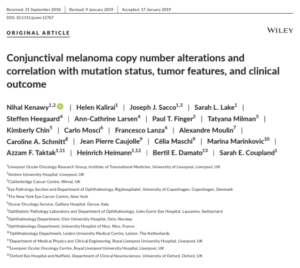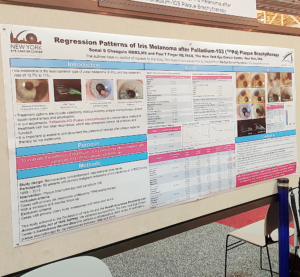A “Biomarker” for Conjunctival Melanoma
The COMS Study
What causes conjunctival melanoma (CoM)? Because of its rarity, much about CoM is unknown. Current medicine has yet to truly pinpoint any underlying genetic factors affecting CoM. In fact, no molecular drivers have been clearly defined in association with metastasis, recurrence prognosis, cell type, or other characteristic factors of CoM. In response to this gap in literature, a large multi-center study was launched. Over a dozen eye cancer centers collaborated in order to determine biomarkers that may indicate risk for metastasis or tumor growth.
 With access to a large sample of nearly 100 patients from eight different eye cancer centers around the world, the researchers behind this study sought to clearly define key biomarkers of CoM metastatic risk, and to correlate these biomarkers to clinical features and outcomes. This association of molecular indicator to clinical feature would ultimately help treatment providers identify patients who are at greater risk for metastasis, and help researchers identify possible molecular targets for therapy.
With access to a large sample of nearly 100 patients from eight different eye cancer centers around the world, the researchers behind this study sought to clearly define key biomarkers of CoM metastatic risk, and to correlate these biomarkers to clinical features and outcomes. This association of molecular indicator to clinical feature would ultimately help treatment providers identify patients who are at greater risk for metastasis, and help researchers identify possible molecular targets for therapy.
At the conclusion of this study, it was found that in deletion mutations in a gene region called “chr10” (normally consisting of tumor-suppressing genes) significantly correlated with metastasis, lymphatic invasion, and increasing tumor thickness.
This study was the first to characterize chromosomal copy number alterations (CNAs) in such depth and with such a large and well-defined sample. The result is a more clearly-defined biomarker as a CoM risk factor than there has been in previous literature. The next plan of action with this newfound information, however, would be to apply this and other relevant research in order to further develop more effective therapies and accurate prognosis.
Check out The Eye Cancer Foundation for more information on the latest eye cancer research, charitable accomplishments, and for more information on how to donate and support new research and education!

 Click here for the full-text!
Click here for the full-text!










